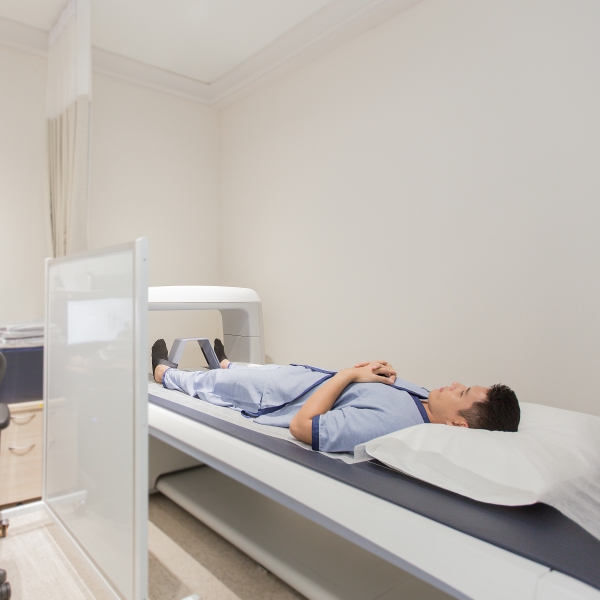Brown Fat and White Fat: A Solution for Obesity?
In recent years, particularly in South East Asia, the rise of obesity along with many other cardiovascular related diseases has increased significantly. According to figures from the World Health Organization (WHO) from 1975 to today, there has been a three-fold increase in the number of people who are overweight or obese, which accounts for 52% of the number of the global citizens. It’s a similar situation in Thailand where the rate of obesity and being overweight is the second-highest in South East Asia. A shocking 50% of Bangkok's population is overweight, which is the highest compared to any other parts of the country.
Despite efforts to promote following a healthy lifestyle, eating consciously, exercising and introducing innovative medical efforts to solve this problem, the number of people who suffer from being overweight is growing. Obesity is the result of a high number of calories not being used, and the excess calories being kept in the form of cells called white adipose tissue (white fat). These cells are usually stored and collected around the hips, thighs and most importantly belly (visceral fat), which explains why many of us may seem paunchy in these areas. This belly fat is considered the most harmful of all. It can lead to metabolic syndrome which is a significant cause of heart disease, diabetes and many other non-communicable diseases.
Apart from white fat, you may have heard of another type of fat called brown adipose tissue (brown fat), which looks and works differently to white fat. This reddish-brown fat is made up of Iron in mitochondria, veins, nerve system and a lot of uncoupling protein1 (UPC1)1. That is why this type of fat is mostly deposited in and around the spine and neck, including kidneys, adrenal glands and aorta, largely found in young people and decreases with age. The brown fat tissue has two important functions; to burn calories from sugar and fat (Energy Catabolism), and to produce heat. That is why people with more brown fat can burn more calories and may be better adapted in colder climates.
Brown fat has recently received more attention after mounting research, where it has been found to be a potential key to solving the obesity crisis. Although brown fat cells comprise only 50 grams or less than 0.1% of body weight; once being fully activated, the body will burn up to 20% of the body's total energy consumption per day. In contrast, white fat cells can account for up to 50% of body weight in adults with a high calorie intake. You can see how these two types of fat cells have clearly different roles. (5)
How do we increase the brown fat tissue?
Although the brown fat is abundant when we are young and gradually decreases as we get older. With effort, there seems to be several ways to stimulate the work of brown fat, whilst even turning white fat into brown fat.
1. Eat Right
Eating an adequate, balanced diet can stimulate the brown fat to burn energy normally and maintain a stable muscle mass.
2. Maintain Healthy Body Weight
Less brown fat can be found in people who are obese than those who are a normal weight. In addition to this, the brown fat in obese people also appear to work less efficiently as well. Studies have shown that brown fat will function normally again, once their body weight is reduced.
3. Exercise More
Irisin protein can turn white fat into brown fat. People who exercise regularly produce a higher amount of this type of protein compared to those who lead a sedentary lifestyle. In particular, the amount of Irisin is increased when High Intensity Interval Training (HIIT) is applied. HIIT is a type of exercise practice which involves quickly switching between intense exercise and rest. However, the result depends on the individual’s body condition and should be under the supervision of a specialist.
4. Cooler temperature
Being exposed to cooler temperatures should stimulate brown fat to burn calories more efficiently.
5. Make good food choices
Eat more chilli such as paprika, capsicum as they contain a beneficial nutrient called capsaicin and capsinoids which are the activity of brown fat. Research into animal testing shows that substances in the group of polyphenols such as curcumin from turmeric, resveratrol extract from grape skin and mulberry can increase body temperature.
Increasing the amount and function of brown fat may be a good option to help prevent people becoming overweight and solve obesity. Remember, eating healthy foods by keeping 50% of your meal for vegetables, getting enough sleep, and exercising regularly, is still fundamental for a healthy life. It is also key to having strong immunity, and thus preventing illnesses and non-communicable diseases in the future.
References
- จิตรวีณา มหาคีตะ. The Update of Brown Adipose Tissue in Adult Human: Possible Target to Battle Obesity?. Royal Thai Army Medical Journal. 2013:83-92.
- Lee P, Smith S, Linderman J, Courville AB, Brychta RJ, Dieckmann W, Werner CD, Chen KY, Celi FS. Temperature-acclimated brown adipose tissue modulates insulin sensitivity in humans. Diabetes. 2014 Nov 1;63(11):3686-98.
- Maalouf GE, El Khoury D. Exercise-induced irisin, the fat browning myokine, as a potential anticancer agent. Journal of obesity. 2019;2019.
- El Hadi H, Di Vincenzo A, Vettor R, Rossato M. Food ingredients involved in white-to-brown adipose tissue conversion and in calorie burning. Frontiers in physiology. 2019 Jan 11;9:1954.
- Townsend K, Tseng Y-H. Brown adipose tissue: Recent insights into development, metabolic function and therapeutic potential. Adipocyte. 2012;1(1):13-24.




